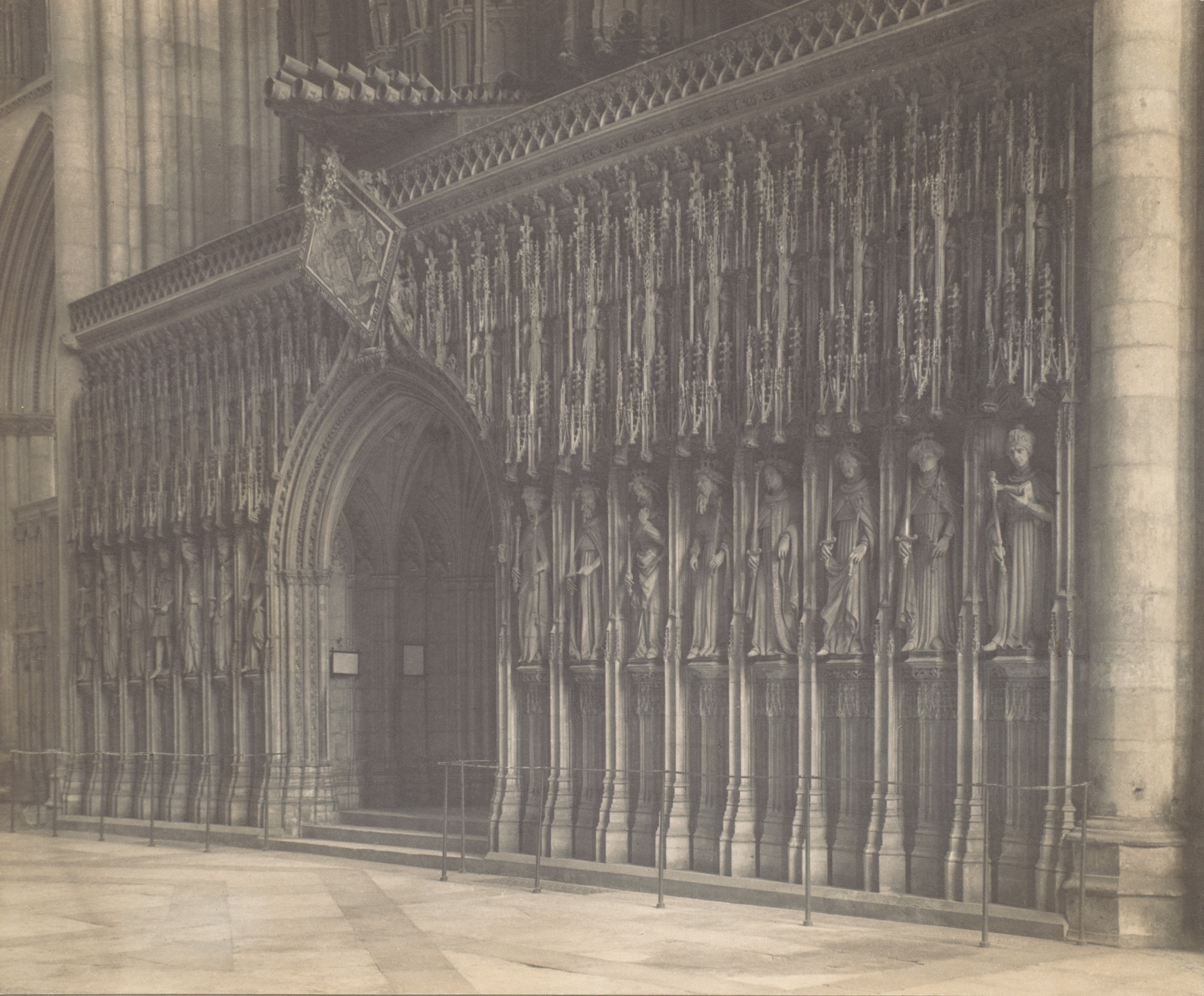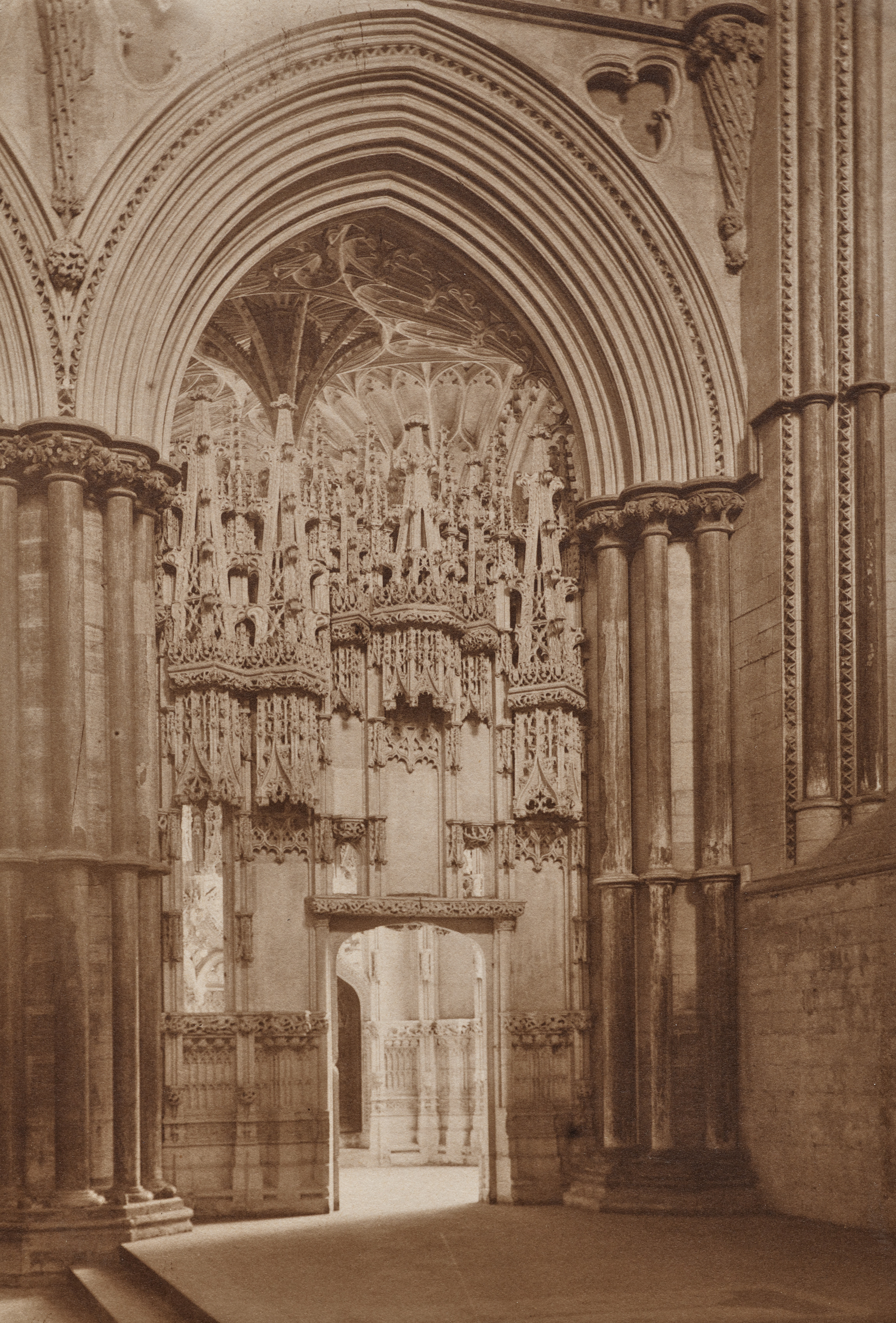
I want to highlight an architecture paper I enjoyed: François Bucher’s “Micro-Architecture as the ‘Idea’ of Gothic Theory and Style,” published 1976.1 It’s short: just six pages, plus photos and notes.
Bucher’s opening paragraph warns of a “strange reversal of reference.” For many, ‘Gothic’ is all about the big stuff, the buildings — both our most visible relics of the Middle Ages and the main inspirations for later Gothic revivals. For Bucher, the buildings are formal precursors and a theoretical distractions. Gothic architecture, he says, really gets going in miniature.
Abbot Suger of St. Denis is often credited with more or less inventing Gothic architecture wholesale in his design of a light-filled ambulatory for the Basilica of St. Denis, just north of Paris, in 1140ce. Suger didn’t cut the stones himself, and the new pointy-arched style wasn’t without architectural precedent, but Suger had a rare instinct for self-promotion.2
The Abbot was also a magpie, deeply occupied with the treasures glittering in the light of his huge new windows. He’s oft credited with an “anagogic” philosophy of Gothic architecture, wherein the architecture is supposed to draw a worshiper’s attention towards the promise of a celestial architecture (“this church has the biggest windows I’ve ever seen; I bet the windows in heaven will blow my mind!”). According to the Bucher paper, Suger’s early-Gothic anagogy is more correctly a philosophy about small objects — “gee, that’s the biggest opal I’ve ever seen…” — than about the pointy arches and flying buttresses of the Basilica. Art historian Erwin Panofsky is more insistent: the close association between Suger’s architecture and his anagogy is a popularized “misreading.” “In reality,” Panofsky writes, Suger’s most famous passage on anagogy “describes only the trancelike state induced by the intense contemplation of lustrous pearls and precious stones.”3
In spite of this original emphasis on the miniature — those “pearls and precious stones” on the high altar at St. Denis — the Gothic style develops, through the early and high Gothic periods, into 12th century mega-architecture (“megalomania” or “Gothic gigantism” in Bucher’s words). These are the huge projects most popularly associated with the Gothic: Notre Dame de Paris, Chartres, Amiens, and so on, grand demonstrations of the spiritual primacy of the Church and the earthly hegemony of their patrons. As their constructions become technically ultra-sophisticated — ever lighter, ever thinner, with more sculptural vaulting and more tenuous statics — the master-builders grow powerful in their own right. Consolidating the disbursement of artistic patronage, these architects begin “to impose their aesthetic vocabulary upon the world of reliquaries, stalls, fonts, pulpits, tombs, etc.,” the world of what Bucher terms “micro-architecture.”4

In the mid-13th century, the micro-architecture surpasses the macro. Small elements like screens and lecterns flower into “magnificently abstract works of refined architecture.” Bucher describes what I’d call simulacrum-architecture at small scale: sacred objects constructed from the same basic tenets as a Gothic building, but modeling a building that would be materially impossible (either because of its insane extrapolated scale or a fineness unachievable in iron-reinforced stone).
At around the same time, macro-architecture encounters material impossibility. The 47.5m-high vault of Beauvais Cathedral — still absolutely mind-numbing today, the highest Gothic choir in the world — collapses in 1284. The 1300s ce turn out to be a hard century for grand projects in western Europe, years dotted with power struggle, feudal war, plague, financial collapse, and popular rebellion. Patronage gets smaller, and architecture with it. Already-refined micro-architectural elements replace buildings as the main focus; projects emphasize “enrichment of details, sophisticated treatment of materials, and daring designs.” Gothic macro-architecture collapses in on itself, folds over into something “marvelously prickly […] the seeming disarray of ever more complex cantilevering, branchwork, double curved and utterly surrealistic ribs and bent finials.”
Bucher argues it’s this micro-architecture of the late middle ages that best exemplify the Gothic aesthetic rationale, something “detached [from] exacting architectural discipline,” a style “gloriously deranged.” If you believe Panofsky’s reading of Abbot Suger — that the exegetic power he saw in St. Denis lay in its treasures, not in its building — this derangement-in-miniature closes the loop. The Gothic architects gave light to sacred objects, then increasingly gave them form; finally, at the end of the middle ages, Gothic openwork is the exegetic expression of Suger’s glittering vision.
Consider the original inscription of St. Denis’s portal:5
Whoever thou art, if thou seekest to extoll the glory of these doors, Marvel not at the gold and the expense but at the craftsmanship of the work. Bright is the noble work; but, being nobly bright, the work Should brighten the minds, so that they may travel, through the true lights, To the True Light where Christ is the true door. In what manner it be inherent in this world the golden door defines: The dull mind rises to truth through that which is material And, in seeing this light, is resurrected from its former submersion.
